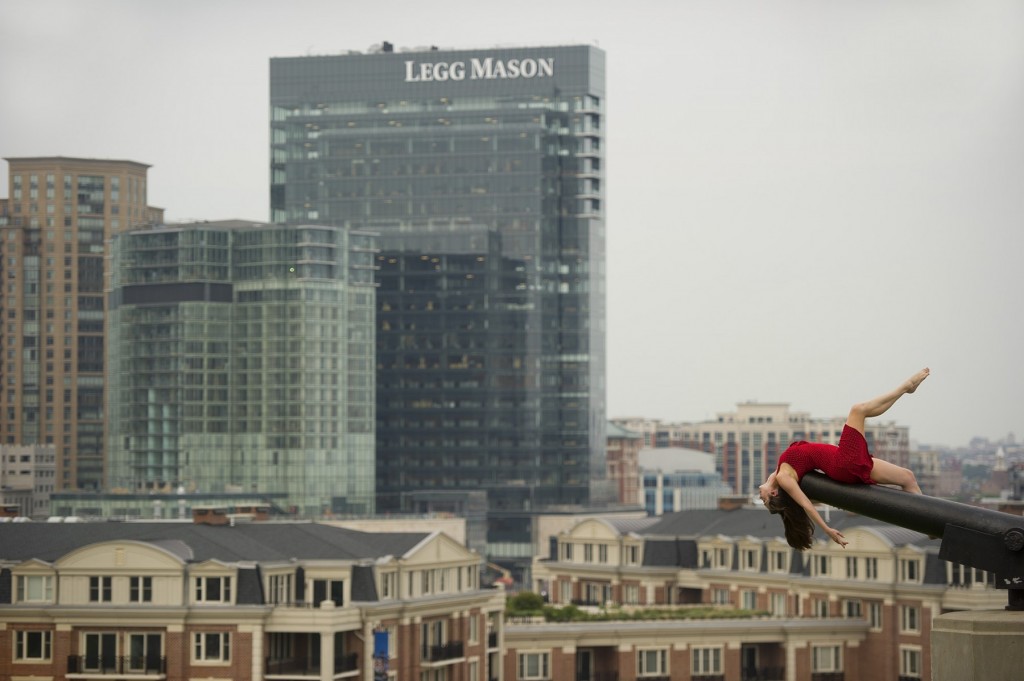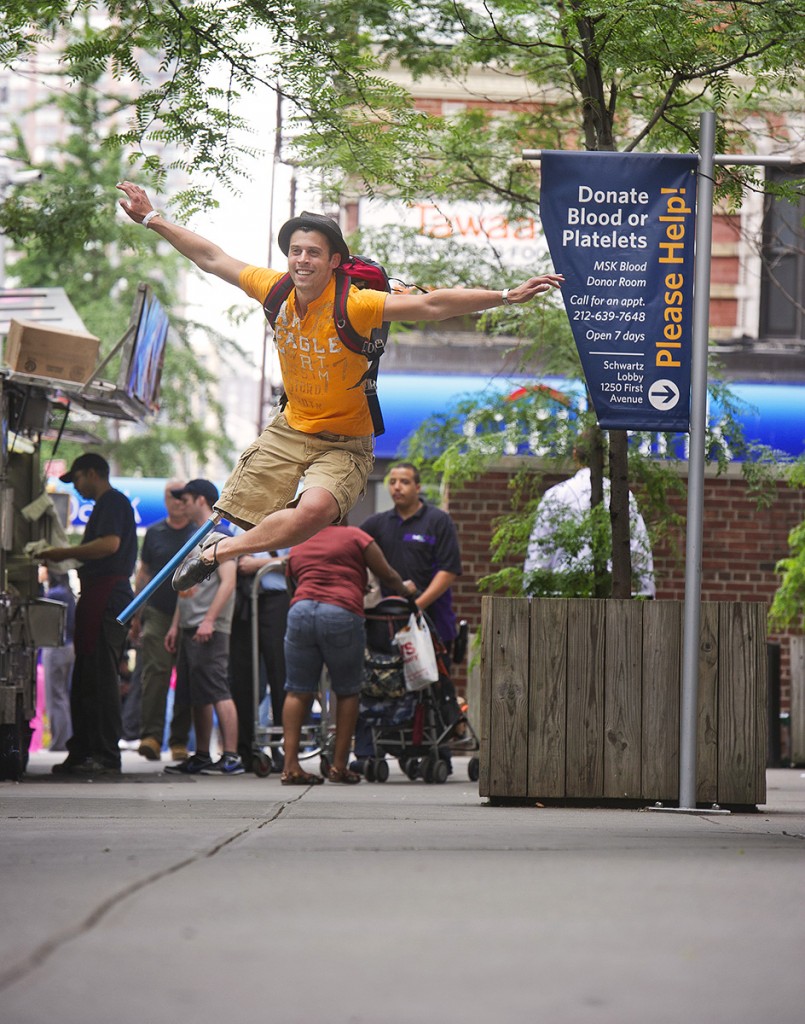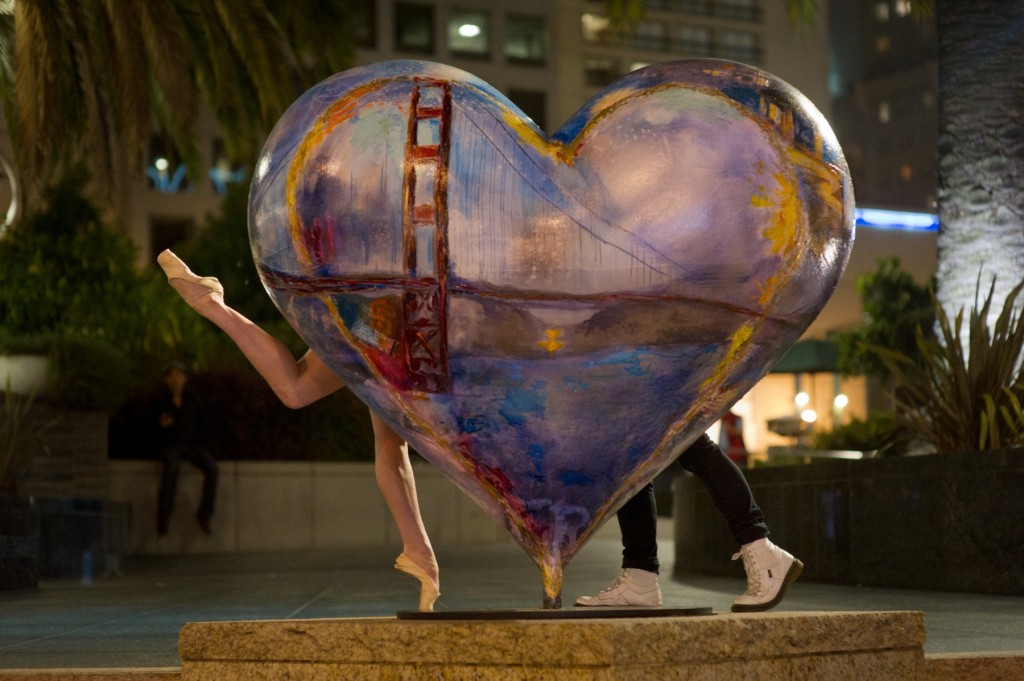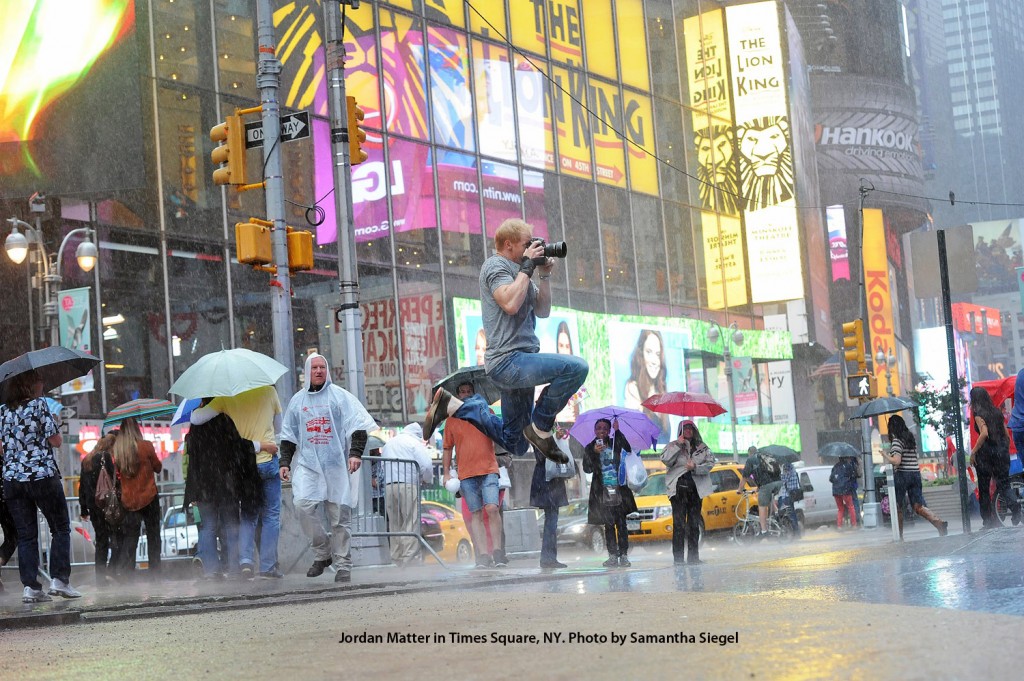Jordan Matter is a portrait photographer in New York City who has had work featured on the Today Show, Tyra Banks, MSNBC, NBC, MTV, BBC, ZDF TV, NY Daily News, Washington Post, Oprah Magazine, Dance Magazine, Huffington Post, and in newspapers, magazines and blogs around the world. He has photographed the past two advertising campaigns for the Paul Taylor Dance Company, and now he is also the force behind the new book Dancers Among Us.
DAU reached the NY Times extended best seller list in its first week, despite having only been on sale for part of the week. Also, it sold out on Amazon in 48 hours, and was #1 on Reddit last Friday. Just as I was sitting down to put the interview and photos together to run on 4dancers, I looked up to see this book spotlighted on my nightly news in Chicago. Clearly it’s a hit–and not just with the dance community.
As I scrolled through the photographs to select the ones I would use for this post, I found myself smiling the entire time. Matter has managed to capture dance in a way I have never quite seen it before. It’s fresh and fun, and it really must have been something to be involved in the shoots pictured in this book. Let’s take a peek behind the scenes–
How long have you been photographing dancers, and what got you started on this subject matter in the first place?
I’ve been photographing dancers for the exact amount of time that I’ve been photographing “Dancers Among Us,” which is about 3 ½ years. I had no dance photography experience when I started this project. Jeffrey Smith of the Paul Taylor Dance Company hired me to shoot his headshots, and I told him about my idea of photographing dancers in everyday situations. He loved it and convinced ten PTDC company members to collaborate with me, despite the fact that I’d never shot dancers before.
You recently published a book, “Dancers Among Us”. How did the idea for that project come about?
I was watching my three-year-old son, Hudson, play with a toy bus, and I was struck by his enthusiasm and intensity. As we grow up, most of us seem to lose this ability to be wholly in the moment. I thought it would be exciting to create photographs that celebrated the joy of everyday life, seeing the world as if through the eyes of a child.
What was the process like of getting the photography together for this book?
It was thrilling. I spent the first two years shooting in NYC, and the last year traveling around the US. I would tweet and Facebook my destination, and the dancers came out in big numbers. Everywhere I went dancers were excited to volunteer their time, often traveling great distances to participate. I photographed well over two hundred dancers, and I owe each of them a huge debt of gratitude.
The most difficult part was cutting photographs- knowing that dancers would be left out of the book through no fault of their own. It was heartbreaking. I wrote a blog about that process, “I’m a Piece of S#!T… and I’m Sorry”, which you can read on my blog.

Can you share an interesting “behind-the-scenes” story about one of the photos in this book?
Sure. In the back of the book there are behind-the-scenes stories for most of the photos. Here’s an example-
“Surrender” (Rachel Bell)- Is this pose as unsafe as it looks? Yes, in more ways than one. Not only is Rachel hanging off a cannon at a great height, but we shot in 105-degree weather: That cannon was steaming hot. Just so you don’t think I’m completely heartless, I found a very strong man in the crowd that had gathered and asked him to hide behind the cannon and hold her left leg. (He crouched in a way to obscure himself from the camera’s view.) I entrusted Rachel’s life to a complete stranger, so maybe I should take back that heartless comment.

What is the greatest challenge in photographing dancers?
Dancers are used to being rigidly choreographed, and they’re not often encouraged to collaborate in the creative process. As a result, dancers often wait for direction rather than throw out ideas. I consider the dancer an equal partner, and those who embrace the creative process are often asked back several times. Also, dancers can be extremely critical of themselves, and they get very frustrated if they don’t meet their expectations (which are often set impossibly high). A choreographer with a major company once told me that dancers live in a constant state of negative reinforcement, and it takes a strong personality to rise above it.
What is the most rewarding part about this type of photography?
Just look at them. Dancers are unbelievable-they’re the perfect subjects to photograph. They’re beautiful, athletic, expressive, and willing to try anything. I quickly realized that if I could imagine it, the dancer could probably do it. I can’t believe that photographers all over the world aren’t raiding their local dance studios.

What do you think has helped you the most in becoming a dance photographer?
Being completely ignorant of the dance world, so I could approach my work with a fresh eye, unburdened by expectations. I actually don’t consider myself a dance photographer-I’m a photographer who uses dancers to tell stories. The quality that helped me tell those stories is a willingness to trust serendipity. Almost every photograph in the book came together through serendipity. I rarely ever had a plan- the dancer and I would explore the environment until I discovered something that excited me. Then I would ask, “What is the story? What’s the scenario?”
Usually dance photos are either pretty pictures in a studio or pretty pictures outside. I wanted to break away from that mold and create images that could resonate with everyone, not just dance fans. I tried to take slices of life that are easily recognizable and imbue them with joy and passion. However, it wasn’t always easy to trust that things would just work out when I had four dancers who just drove five hours and are waiting for me to make a decision. As we walked around, seemingly aimlessly, I would usually say, “Don’t worry, this is the process. The shot is right around the corner somewhere. Just stick with me.”
Is there a particular method you have come up with to capture a dancer’s personality through a photo?
The dancer’s personality comes through in the scenario. It’s much easier for dancers to show that they’re funny, sexy, intense, or whatever if the story highlights that quality. It’s much more difficult in a studio setting. When I’m considering a scenario, I always see the dancer as an individual and try to gauge what interesting characteristics he or she will bring to the photo. My favorite is humor-I just can’t get enough of dancers who have a sense of humor.
What is coming up on the horizon for you?
I’ve been obsessing over this project for the past three years, so that’s primarily where my focus is right now. I haven’t announced this yet, but there will be a 2014 wall calendar (I guess I just announced it!). I hope to expand “Dancers Among Us” beyond the USA. Why would I ever stop shooting this? It’s my nirvana!
Visit Amazon if you are interested in purchasing Dancers Among Us.
Here’s a behind the scenes video that gives a glimpse of what the process was like:
Dancers Among Us goes around the USA in Ninety Seconds from Jordan Matter on Vimeo.






Great story, great video, super book. I really enjoyed this Q&A!
Wonderful wonderful wonderful!!!! He was one of the first dance photographers I blogged about and I always wanted to interview him (but never had the nerve to ask). Fantastic interview!!!